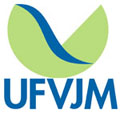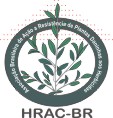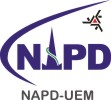BIOLOGICAL AND ECONOMIC EFFICIENCY OF GLYPHOSATE-CONTAINING HERBICIDE MIXTURES FOR PRE-PLANT BURNDOWN CONTROL OF CONYZA SPP. AND OTHER TROUBLESOME WEED SPECIES
Resumo
Pre-plant burndown using herbicides is a key practice in no-till cropping systems, ensuring optimal crop sowing and early-growth conditions. Glyphosate (N-phosphonomethyl glycine) is a broad-spectrum, systemic herbicide commonly employed in pre-plant burndown treatments, as it allows for cheap, effective weed management. Since glyphosate-resistant weed populations are currently widespread in Brazil, at the present work glyphosate-containing tank-mixtures with either 2,4-D, flumioxazin, saflufenacil, or ammonium-glufosinate were sprayed in the field onto nutsedge (Cyperus spp.), arrowleaf sida (Sida rhombifolia L.), and glyphosate-resistant horseweed (Conyza spp.) populations, such that novel, cost-effective control options can be determined. Trials were conducted in the 2016/2017 growing season and employed a total of 10 herbicidal treatments plus an untreated check; herbicide rates followed label recommendations. Experimental units consisted of 15 m2 plots replicated four times, arranged as complete blocks. Weed control efficacy was determined from 7 to 42 days after spraying using a 0-100% grading scale, and was later combined with actual treatment costs to evaluate economic feasibility of these treatments in an agricultural setting. Glyphosate sprayed alone effectively eliminated nutsedge and arrowleaf sida populations, scoring the lowest cost per unit of control. Nonetheless, two- or even three-way tank-mixtures were required for satisfactory (>80%) glyphosate-resistant Conyza spp. control, allowing for a weed-free environment for summer crop seeding. Despite an increase in overall costs, tank-mixing herbicides with different modes of action should not be completely disregarded, especially in a scenario where resistance is likely to develop due to the repeated use of herbicides within the same mode of action combined with the lack of new herbicidal mode of action released into the market.Â
Palavras-chave
2,4-D, ammonium-glufosinate, herbicide resistance, horseweed, saflufenacil
DOI: https://doi.org/10.7824/rbh.v1i1.747
Apontamentos
- Não há apontamentos.
Revista Brasileira de Herbicidas
ISSN (Online) 2236-1065
ISSN (IMPRESSO de 2000 a 2005) 1517-9443
ISSN (IMPRESSO de 2000 a 2005) 1517-9443
Complexo Empresarial Oscar Fuganti
Rua Santa Catarina, 50 - 13º andar - sala 1302
Londrina - Paraná
CEP: 86010-470
Email: contato@rbherbicidas.com.br
TEL: (43) 3344-3364
Segunda à Sexta — 12:00 às 18:0











